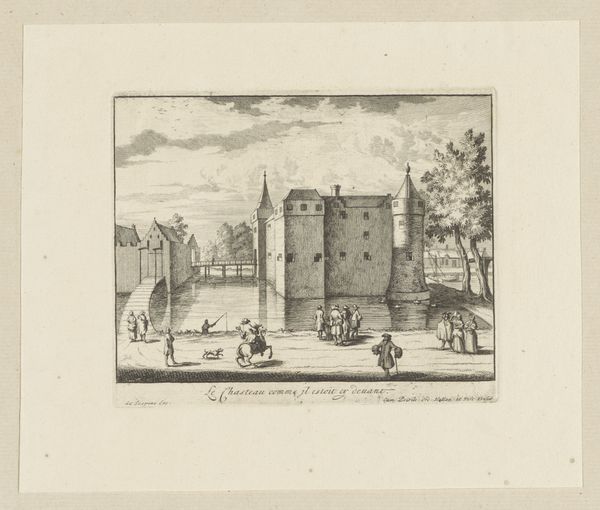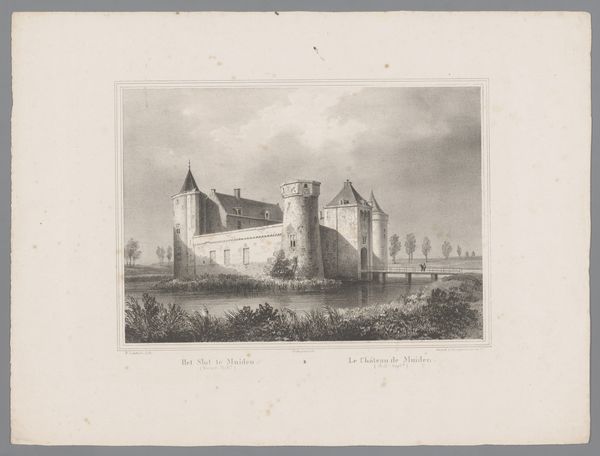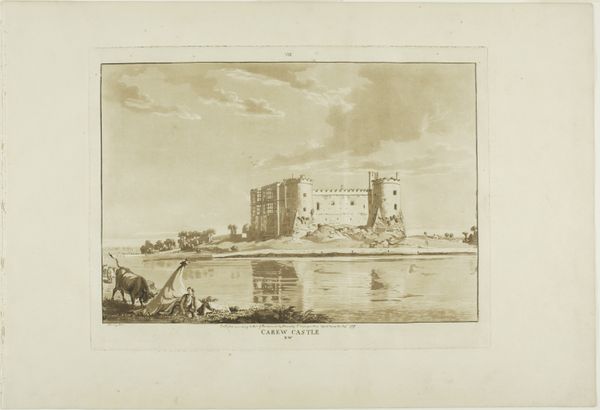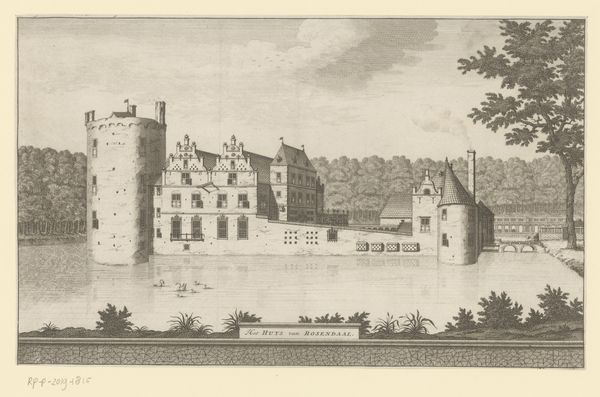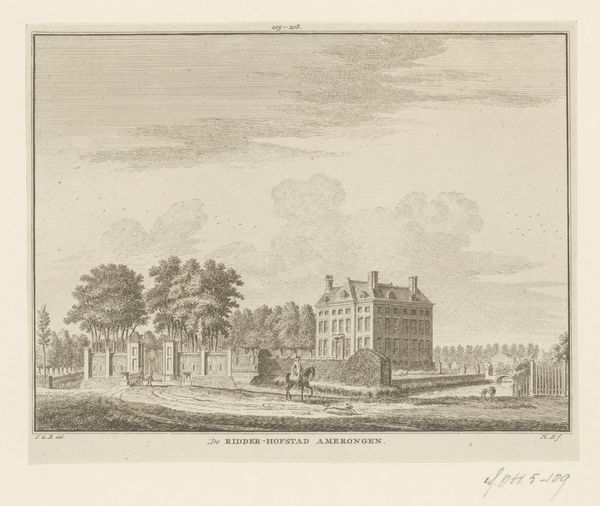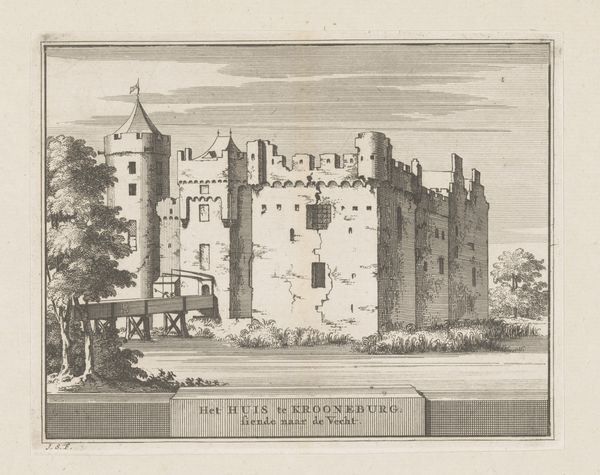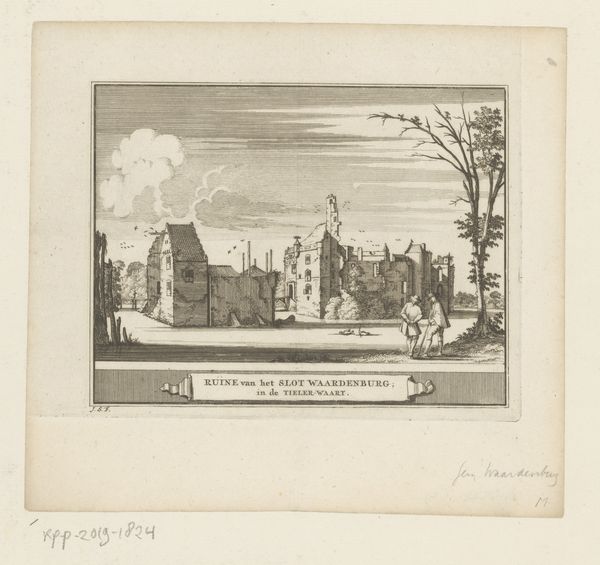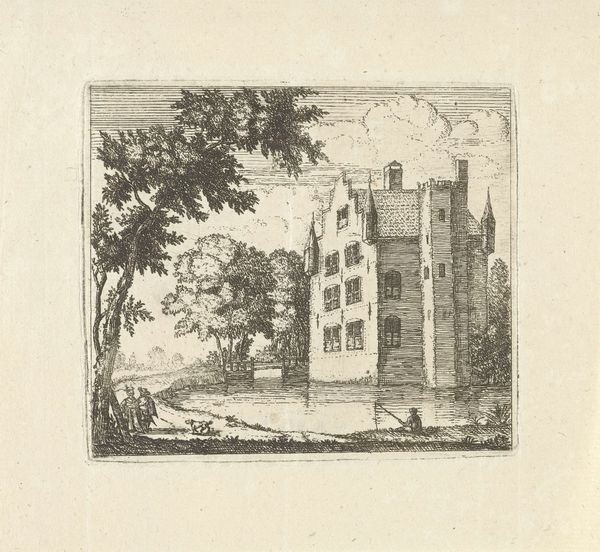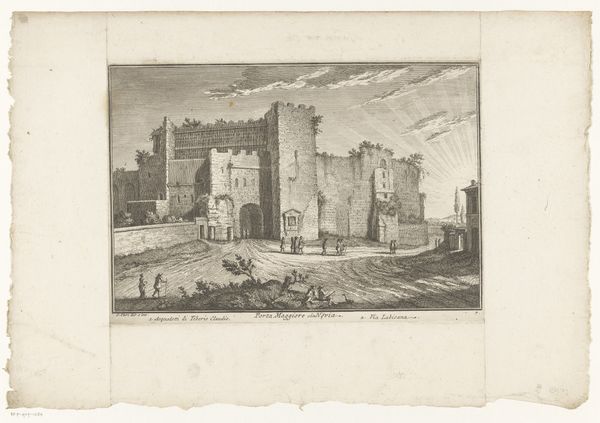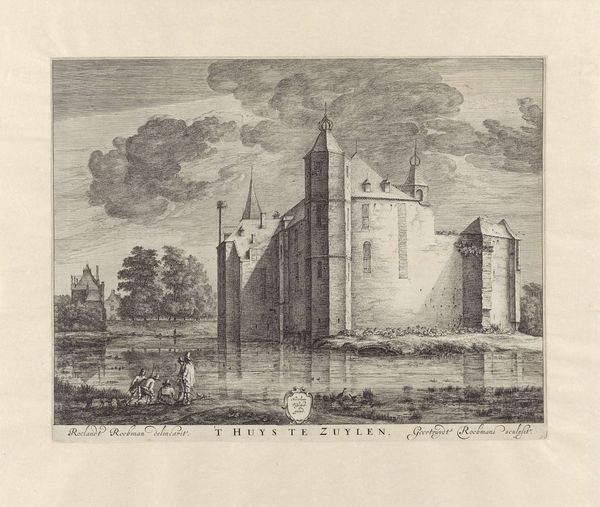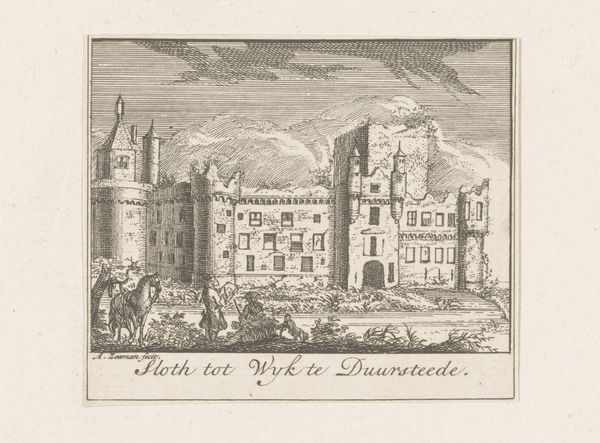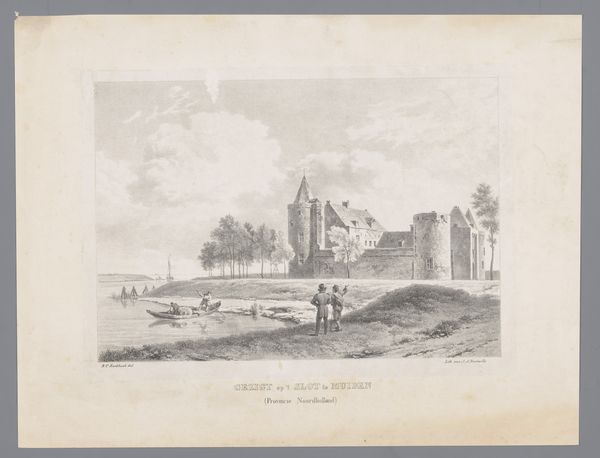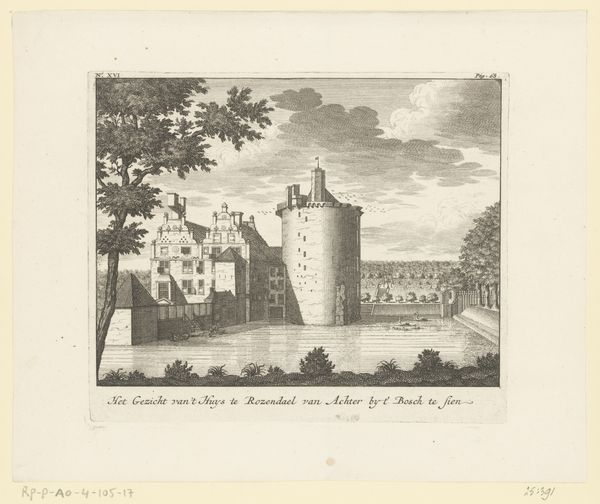
print, engraving
#
dutch-golden-age
# print
#
landscape
#
cityscape
#
engraving
Dimensions: height 195 mm, width 208 mm
Copyright: Rijks Museum: Open Domain
Curator: Here we have Jacobus Schijnvoet's "Gezicht op Kasteel Culemborg," dating back to 1711. It is currently housed at the Rijksmuseum. Editor: The first thing that strikes me is the stark contrast and intricate detail achieved through engraving. It’s almost architectural in its precision. Curator: Indeed. Schijnvoet's careful use of line creates a compelling interplay of light and shadow, especially around the castle's facade and reflecting on the water. Notice how the structural elements of the castle – the towers, walls, and even the windows – are meticulously rendered, creating a sense of depth. Editor: It makes me wonder about the socio-economic role of printmaking at the time. These weren’t simply artworks; they were tools for disseminating information, possibly commissioned to document properties like this. What kind of workshops would have produced these engravings? What labor and skill were involved? Curator: An interesting point. However, the work also demands consideration within the visual language of Dutch Golden Age landscapes. See how Schijnvoet constructs a harmonious composition using the strong horizontals and the placement of the castle? Editor: But it is precisely this “harmony” that deserves deeper analysis. We’re looking at a material depiction shaped by artistic and societal values—what's included, what's emphasized? It says so much about power, wealth, and ownership. The artist’s decision-making in terms of production speaks volumes about cultural messaging. Curator: The strategic framing definitely reinforces a kind of sublime ownership; perhaps commissioned, indeed. Its purpose likely transcended mere representation. I can appreciate how his specific rendering transforms physical material to capture that ideal in such enduring form. Editor: Right. And those marks carry evidence of production—each line inscribed contributes to the print's very existence and impacts meaning, whether intended by the engraver or the commissioner. Considering that is critical to art understanding. Curator: Precisely—form gives content, and vice-versa. To see them apart does disservice to artwork such as this! Editor: Indeed. Through different lenses, this engraving invites layered questions regarding value and visualization as it speaks to process, the place, and the period.
Comments
No comments
Be the first to comment and join the conversation on the ultimate creative platform.
